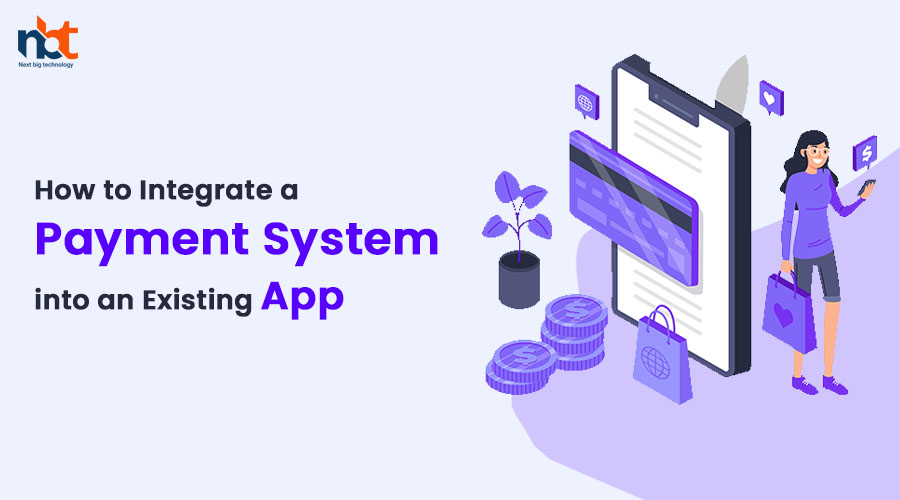Table of Contents
Introduction:
In today’s digital landscape, integrating a payment system into your existing app is crucial to provide a seamless and convenient user experience. Whether you’re running an e-commerce platform, a service-based app, or a subscription-based service, enabling in-app payments enhances customer satisfaction and streamlines the transaction process. In this blog, we will guide you through the essential steps and considerations for successfully integrating a payment system into your existing app.
How to Integrate a Payment System into an Existing App
Understand Your App’s Payment Requirements
Before diving into the integration process, thoroughly assess your app’s payment requirements. Consider the types of transactions you need to support, such as one-time purchases, subscriptions, or in-app purchases. Determine the currencies, payment methods, and third-party payment processors you want to integrate. Understand any compliance or regulatory requirements related to payment processing, such as PCI-DSS (Payment Card Industry Data Security Standard) compliance.
Choose a Reliable Payment Gateway
Selecting a reliable payment gateway is crucial for secure and efficient payment processing. Research and compare different payment gateway providers based on factors such as transaction fees, supported payment methods, international coverage, security measures, and developer-friendly documentation. Some popular payment gateway options include Stripe, PayPal, Braintree, and Square. Ensure the payment gateway you choose aligns with your app’s requirements and provides a user-friendly integration process.
API Integration
Once you have chosen a payment gateway, familiarize yourself with its API documentation and integration guidelines. Most payment gateways offer well-documented APIs and SDKs (Software Development Kits) that simplify the integration process. Understand the API endpoints, authentication methods, and data structures required for initiating and processing transactions. Determine whether you want to implement a client-side or server-side integration, depending on your app’s architecture and security requirements.
Secure Payment Handling
Payment security is of utmost importance to protect your users’ sensitive information. Implement secure coding practices to ensure the confidentiality and integrity of payment data. Utilize encryption techniques, such as SSL/TLS (Secure Sockets Layer/Transport Layer Security), to establish a secure connection between your app and the payment gateway. Avoid storing sensitive payment information on your servers and instead leverage tokenization or payment vaults provided by the payment gateway to store and handle payment data securely.
User Interface and Experience
Design an intuitive and seamless user interface for the payment process within your app. Ensure that users can easily navigate through the payment flow and understand the transaction details. Provide clear instructions, error handling messages, and confirmation notifications to keep users informed at each stage of the payment process. Optimize the payment interface for different device screens and platforms to provide a consistent experience for all users.
Testing and Quality Assurance
Thoroughly test the payment integration to ensure a smooth and error-free user experience. Conduct both functional and security testing to verify the accuracy of payment calculations, validate different payment scenarios, and ensure the security of payment data. Test the integration across various devices, operating systems, and payment methods to uncover any compatibility or usability issues. Consider utilizing sandbox or test environments provided by the payment gateway to simulate transactions and identify and resolve any bugs or inconsistencies.
Compliance and Legal Considerations
Ensure your app’s payment integration complies with relevant regulations and legal requirements, such as consumer data protection laws and financial regulations. Familiarize yourself with the payment gateway’s terms of service and policies to ensure compliance. Display clear and transparent information regarding refund policies, transaction fees, and terms of use to build trust with your users.
Ongoing Maintenance and Updates
Regularly monitor the payment integration for any updates or security patches provided by the payment gateway. Stay informed about changes in payment industry standards and compliance requirements to ensure your app remains up-to-date and secure. Continuously gather user feedback and analytics to identify any usability or performance issues and make necessary improvements.
Conclusion
Integrating a payment system into your existing app enhances user experience, streamlines transactions, and drives revenue growth. By understanding your app’s payment requirements, choosing a reliable payment gateway, following secure coding practices, designing a user-friendly interface, conducting thorough testing, ensuring compliance with legal and regulatory requirements, and maintaining ongoing maintenance, you can successfully integrate a payment system into your app. Remember, prioritizing security, convenience, and transparency will contribute to a positive user experience and build trust with your customers.
Thanks for reading our post “How to Integrate a Payment System into an Existing App”. Please connect with us to know more about payment integration.

















